ジンチョウゲは、秋に花芽ができて冬を越し、春に花が一輪ずつ咲いて丸くなります。花弁のように見えるのは萼筒。春の代表的な香木です。
Winter Daphne produces flower buds in the fall, passes the winter, and blooms one by one and form a ball in the spring. The calyx tubes look like petals. It is a representative fragrant tree of spring.
【仮名】ジンチョウゲ, チンチョウゲ, ズイコウ
【和名】沈丁花, 瑞香
【英名】Winter Daphne
【学名】Daphne odora
【誕生】02/ 10, 02/ 23, 03/ 15, 03/ 18, 12/ 15
【開花】02, 03, 04月
【花色】White, Pink
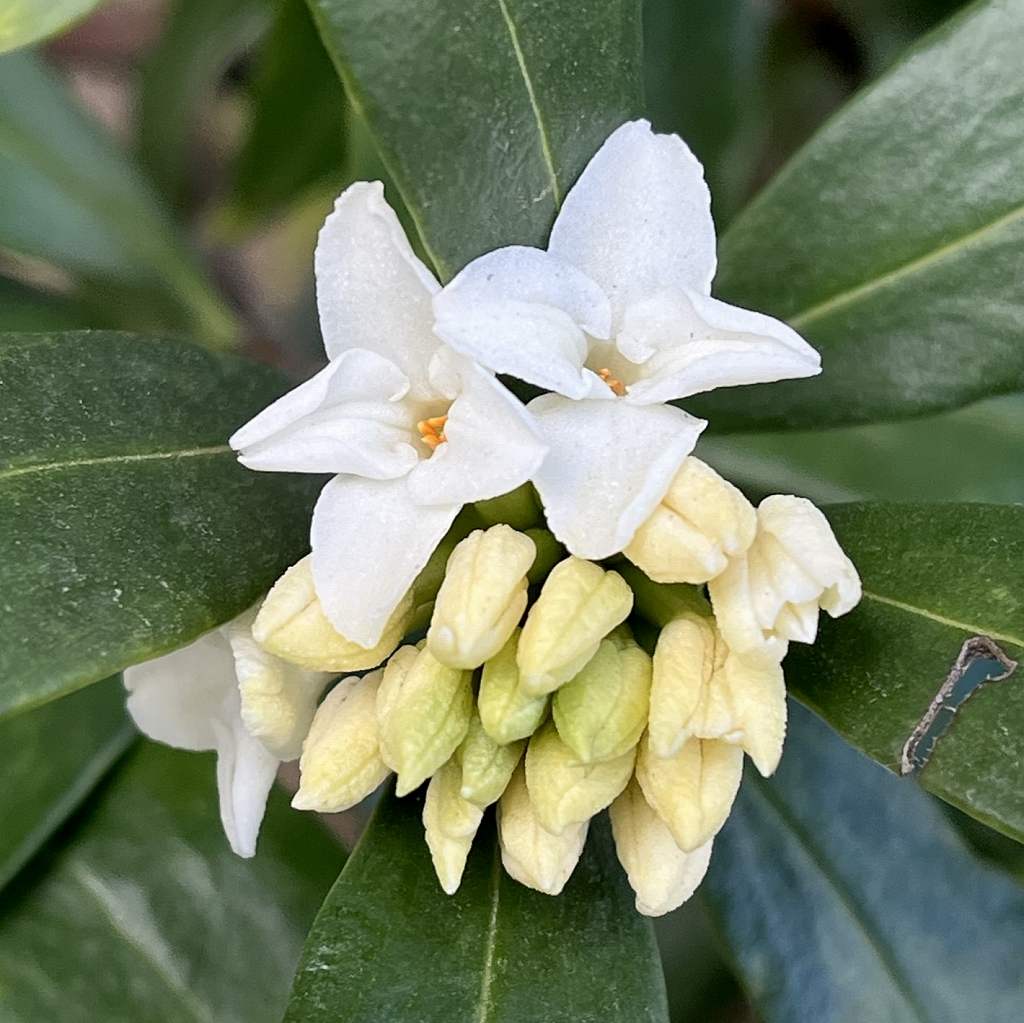
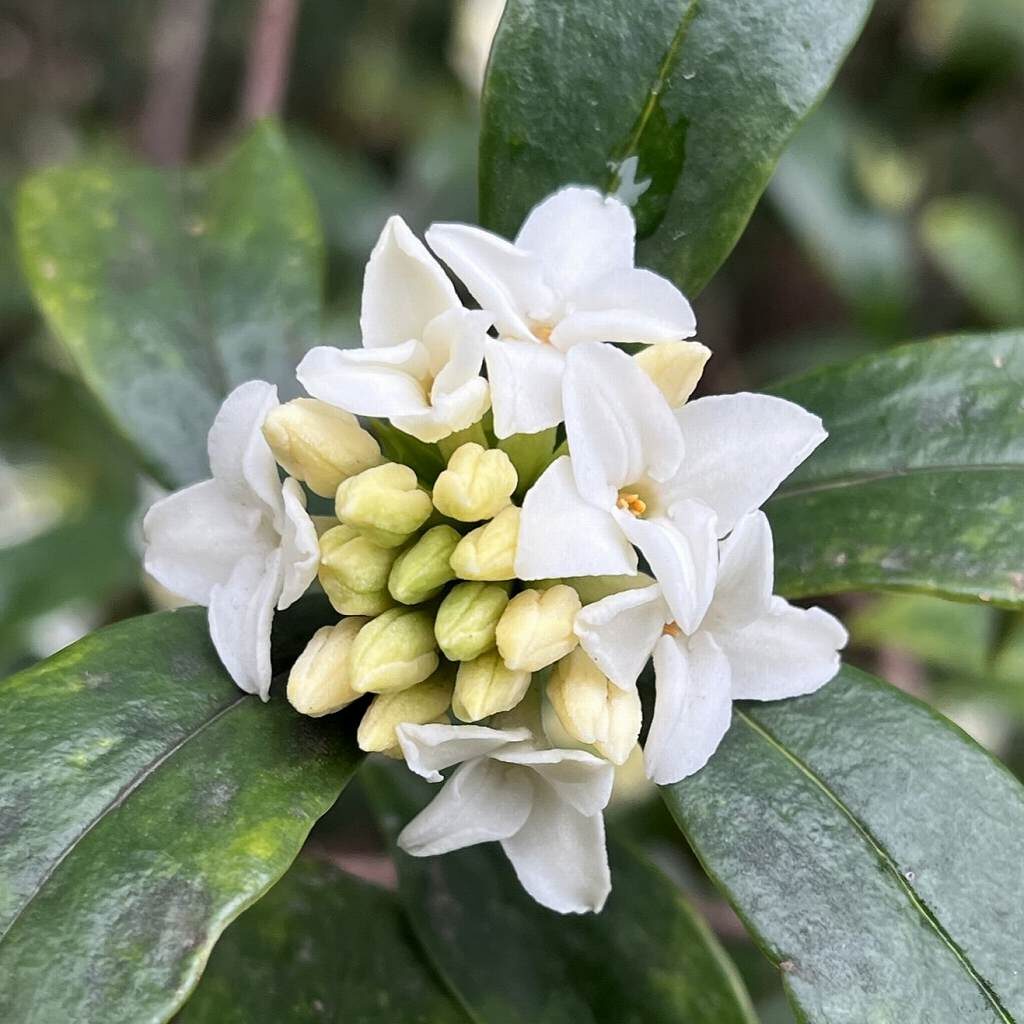
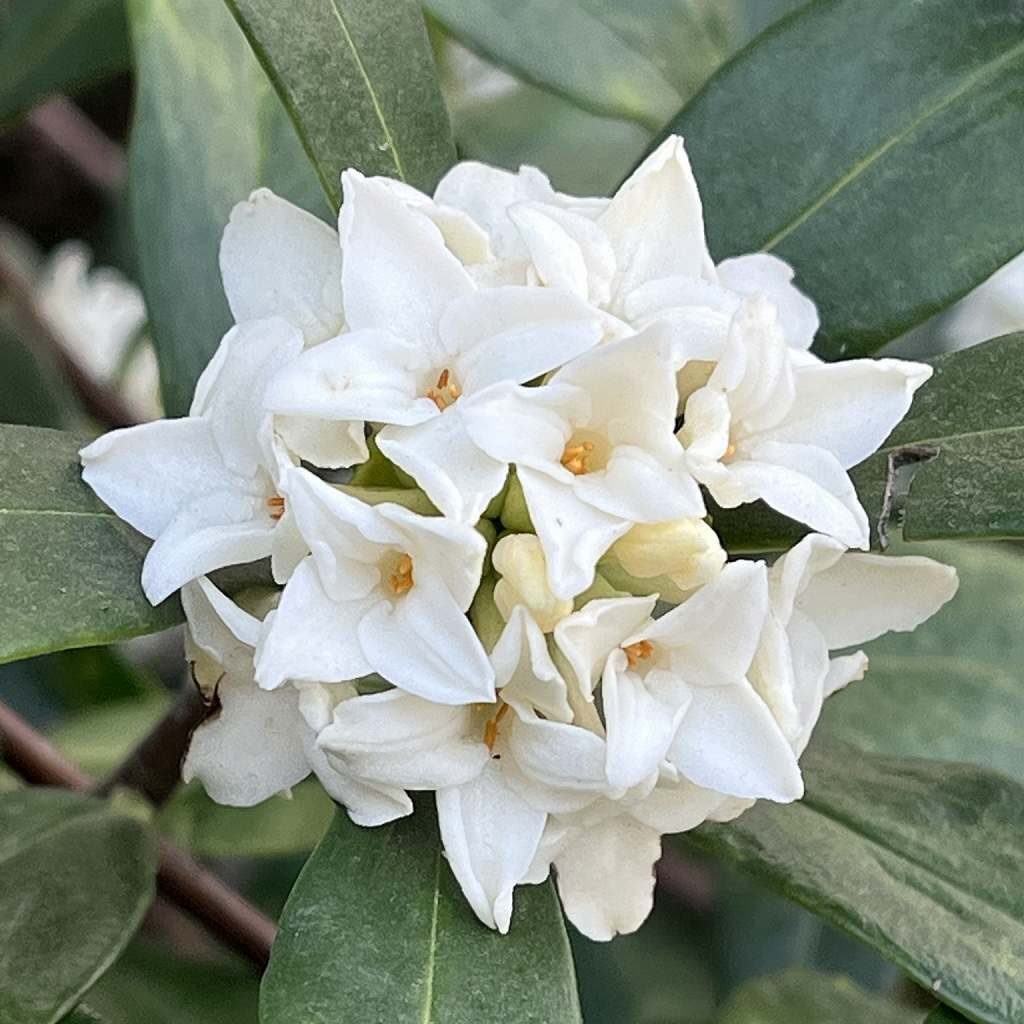
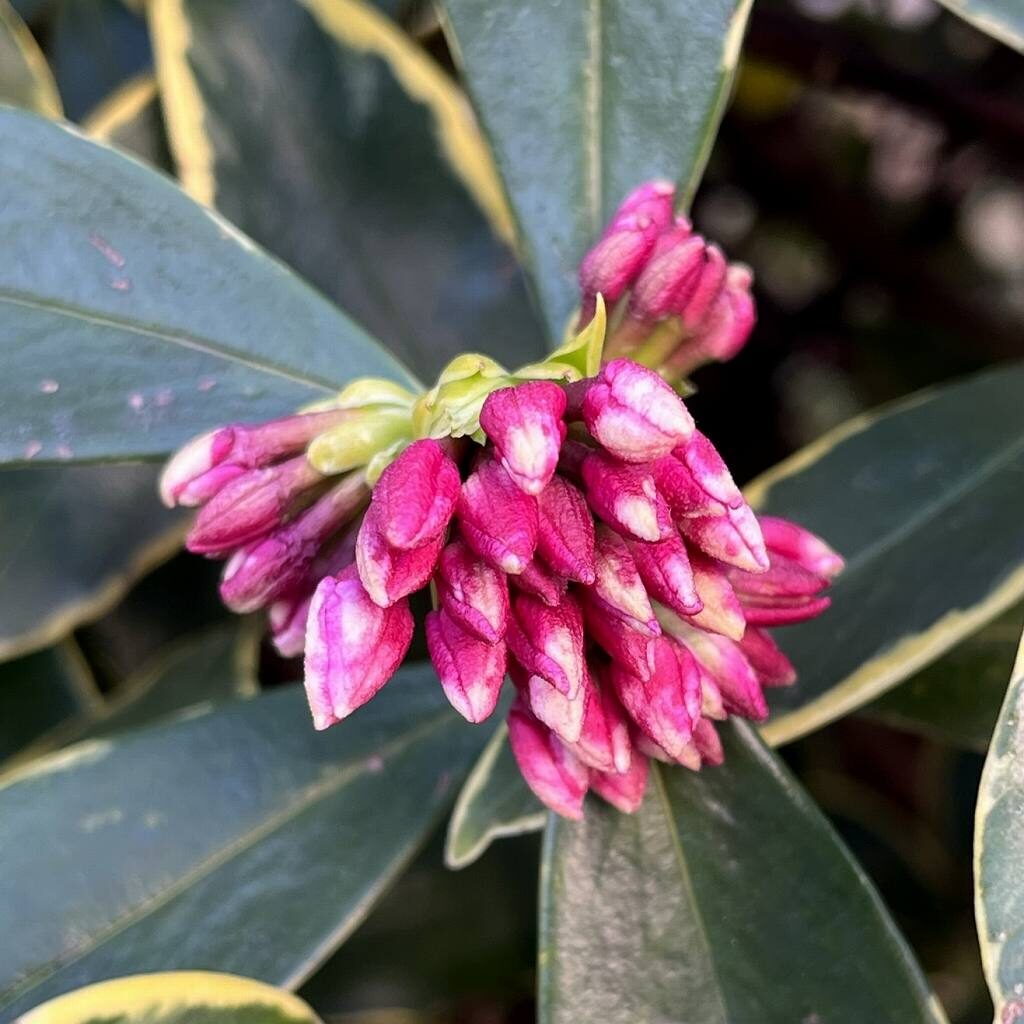
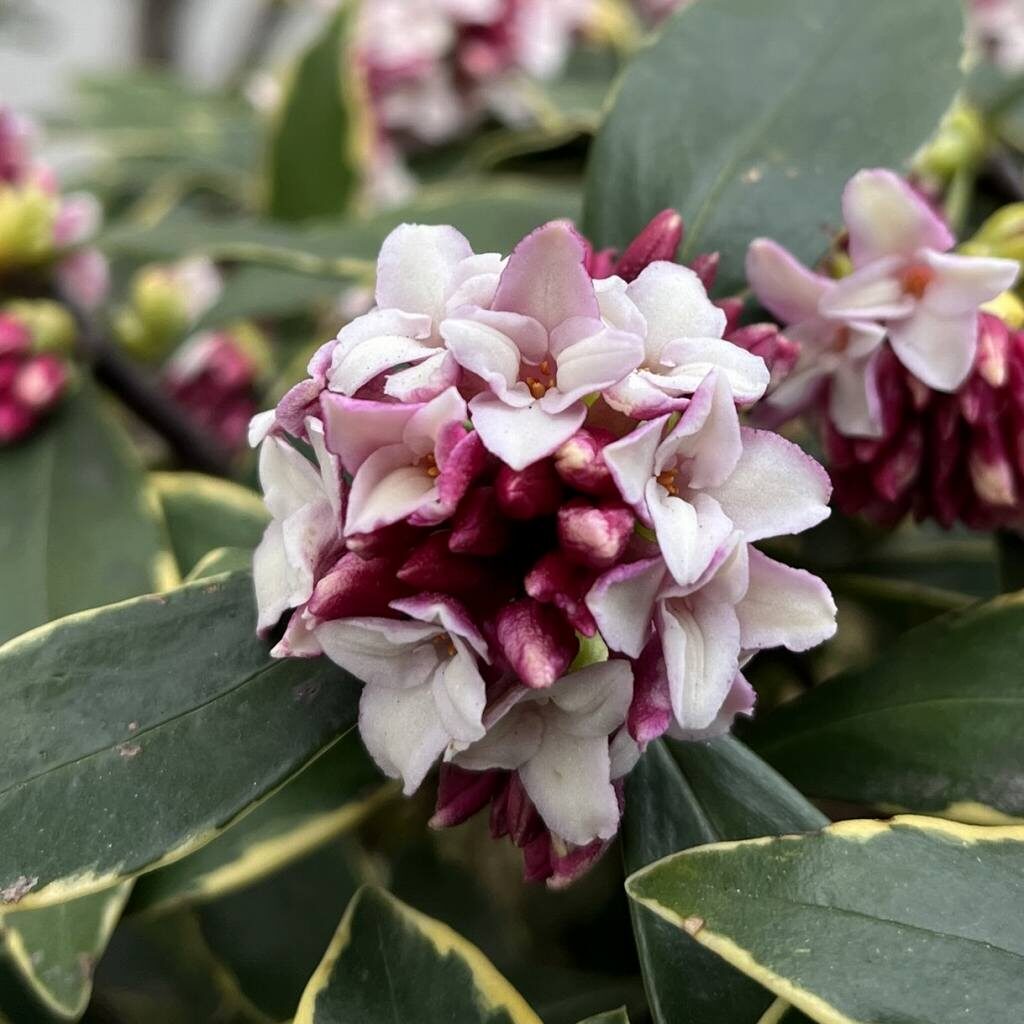
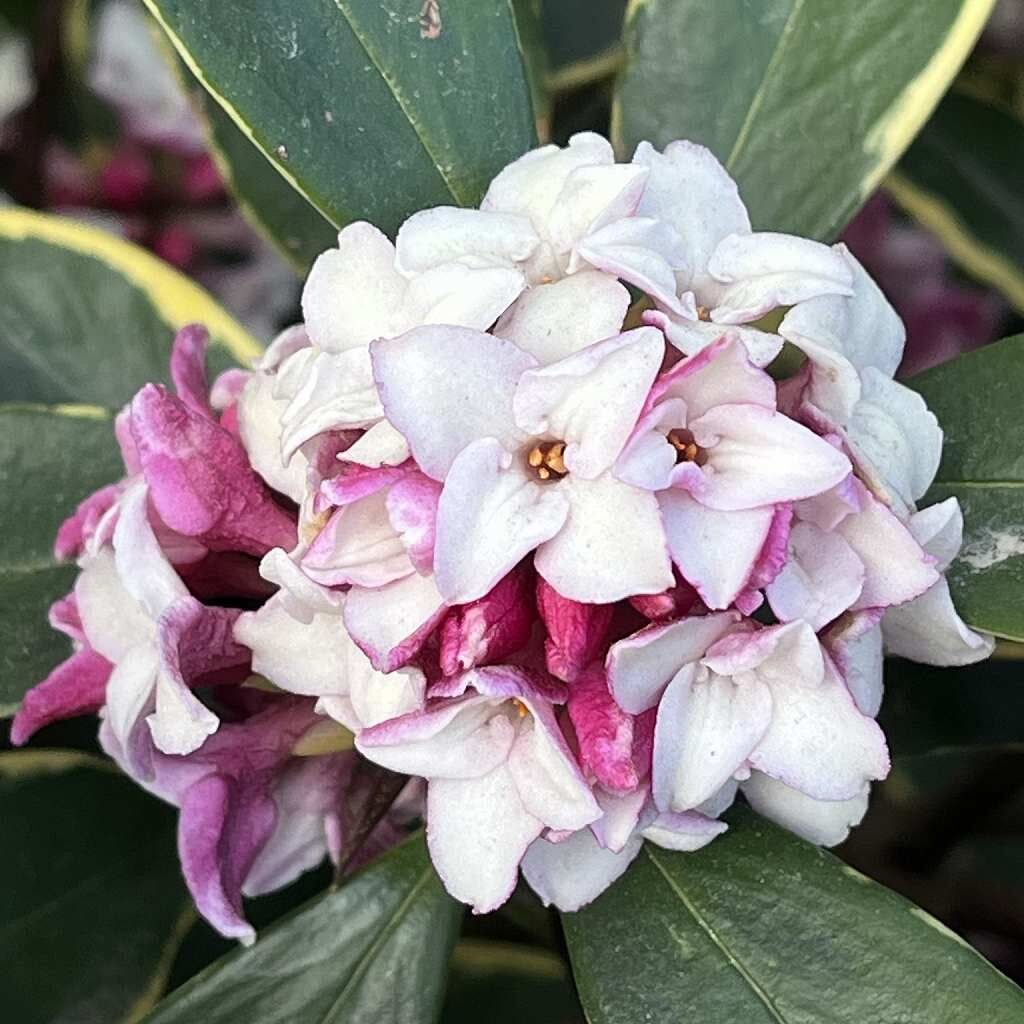
ジンチョウゲ
ジンチョウゲの来歴
ジンチョウゲはジンチョウゲ科の常緑低木。かつて中国に自生していたと考えられ、日本へは室町時代に渡来しました。雌雄異株ですが、雄株が持ち込まれて広がり、雌株は僅少。春の「沈丁花」は、夏の「梔子」、秋の「金木犀」、冬の「蝋梅」とともに、代表的な四季の香木です。
ジンチョウゲの名前
ジンチョウゲの和名は芳香のあるジンコウ属の「沈香」とフトモモ科の「丁子」の頭文字に「花」の組み合わせ。中国名の瑞香は「麗しい匂い」という意味です。ラテン語の属名ダフネはギリシャ神話で「月桂樹」に姿を変えた妖精の名前、種小名オドラは「芳香がある」という意味。
ジンチョウゲの姿形
ジンチョウゲの葉は細長い楕円形で光沢があり、互生。秋に花芽ができて冬を越し、春に花が一輪ずつ咲いて丸くなります。花弁のように見えるのは萼筒で先端が4裂、雄しべは8本。雄株ばかりの日本では滅多に結実しないものの、果実は核果で熟すと紅色になり、辛味があります。
ジンチョウゲの種類
ジンチョウゲは濃艶で、花の外側が紅紫色、内側が白色。そのほか花の外側が淡紅色で可憐な「薄色沈丁花」、花の外側も内側も白色で清楚な「白花沈丁花」、葉の縁に黄白色の斑が不規則に入る「覆輪沈丁花」、雌しべの機能が復活した両性花で結実する「実成沈丁花」もあります。
ジンチョウゲの利用
ジンチョウゲは樹全体に毒性があり、とりわけ果実や樹液に「ダフネチン」が多く含まれます。果実を誤って食べると口内炎や胃炎を引き起こし、樹液が皮膚に触れると炎症や水ぶくれに。一方、いつも緑の葉を絶やさないことから、花言葉は「栄光」「不死」「不滅」「永遠」です。
Winter Daphne
Winter Daphne is an evergreen shrub of the Thymelaeaceae family. It is believed to have once grown naturally in China, and was introduced to Japan in the Muromachi period. It is a dioecious plant, but male plants are brought in and spread to various places, and female plants are few. “Winter Daphne” in spring, “Gardenia” in summer, “Osmanthus” in autumn, and “Winter Sweet” in winter are typical fragrant trees of the four seasons.
The Japanese name of Winter Daphne is combinations of the initials of the fragrant genus Aquilaria “Agarwood” and the Myrtaceae family “Clove” , and “flower”. The Chinese name means “beautiful scent”. The Latin genus name Daphne is the name of the fairy who turned into a “laurel tree” in Greek mythology, and the species name Odora means “fragrant”.
The leaves of Winter Daphne are long, elliptical, glossy, and alternate. It produces flower buds in the fall, passes the winter, and blooms one by one and form a ball in the spring. The calyx tubes that look like petals have 4 cleft tips ,and there are eight stamens. Although it rarely bears fruit in Japan, where there are only male plants, the fruit is a drupe and when ripe, it turns red and has a pungent taste.
Winter Daphne is bewitching, the outside of the flower is reddish purple, and the inside is white. “Rosacea” is pretty because the outside of the flower is pale pink, “Alba” is neat and clean because the outside and inside of the flower are white, “Marginata” has yellowish white spots irregularly on the edge of the leaves, and “The fruitful” bears fruit with a bisexual flower whose function has been restored.
The whole tree of Winter Daphne is toxic, especially the fruits and sap contain a large amount of “daphnetin”. Accidental ingestion of the fruit can cause stomatitis and gastritis, and contact of the sap with the skin can lead to inflammation and blisters. On the other hand, the flower language is “glory”, “immortality” and “eternity” because it always keeps green leaves.


